记一次 JAVA 的内存泄露分析
转自:GitHub 作者:jasonGeng88
https://github.com/jasonGeng88/blog
背景
前不久,上线了一个新项目,这个项目是一个压测系统,可以简单的看做通过回放词表(http请求数据),不断地向服务发送请求,以达到压测服务的目的。在测试过程中,一切还算顺利,修复了几个小bug后,就上线了。在上线后给到第一个业务方使用时,就发现来一个严重的问题,应用大概跑了10多分钟,就收到了大量的 Full GC 的告警。
针对这一问题,我们首先和业务方确认了压测的场景内容,回放的词表数量大概是10万条,回放的速率单机在 100qps 左右,按照我们之前的预估,这远远低于单机能承受的极限。按道理是不会产生内存问题的。
线上排查
首先,我们需要在服务器上进行排查。通过 JDK 自带的 jmap 工具,查看一下 JAVA 应用中具体存在了哪些对象,以及其实例数和所占大小。具体命令如下:
jmap -histo:live `pid of java`
# 为了便于观察,还是将输出写入文件
jmap -histo:live `pid of java` > /tmp/jmap00
经过观察,确实发现有对象被实例化了20多万,根据业务逻辑,实例化最多的也就是词表,那也就10多万,怎么会有20多万呢,我们在代码中也没有找到对此有显示声明实例化的地方。至此,我们需要对 dump 内存,在离线进行进一步分析,dump 命令如下:
jmap -dump:format=b,file=heap.dump `pid of java
离线分析
从服务器上下载了 dump 的 heap.dump 后,我们需要通过工具进行深入的分析。这里推荐的工具有 mat、visualVM。
我个人比较喜欢使用 visualVM 进行分析,它除了可以分析离线的 dump 文件,还可以与 IDEA 进行集成,通过 IDEA 启动应用,进行实时的分析应用的CPU、内存以及GC情况(GC情况,需要在visualVM中安装visual GC 插件)。工具具体展示如下(这里仅仅为了展示效果,数据不是真的):
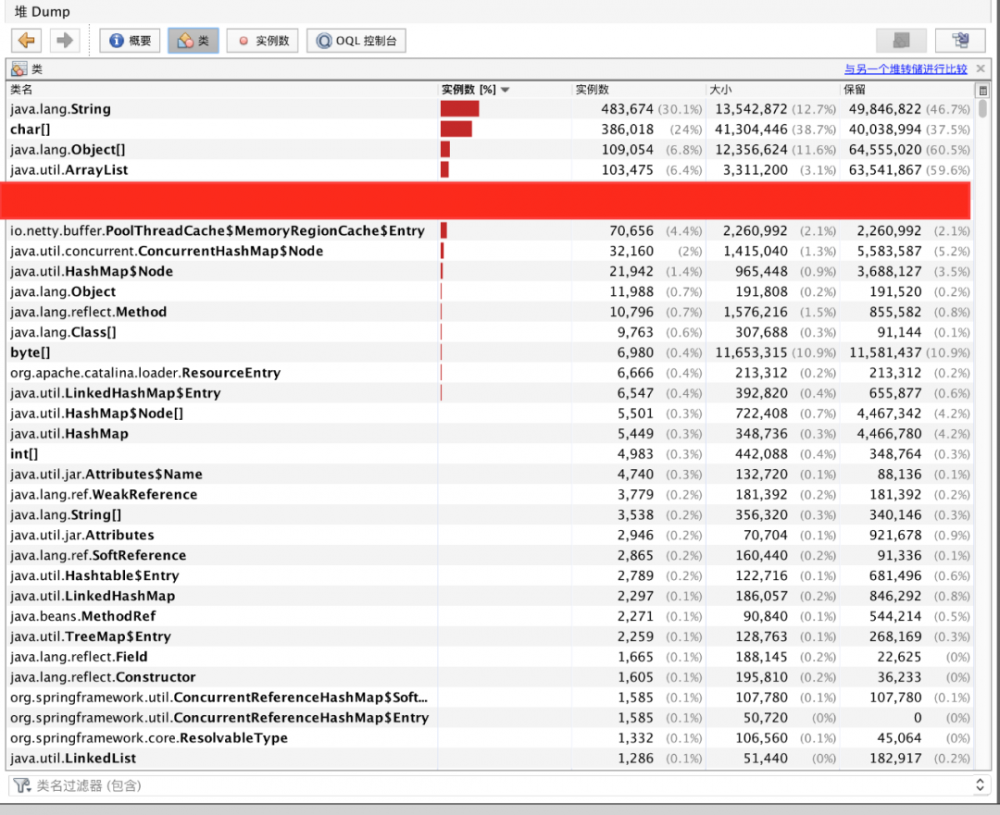
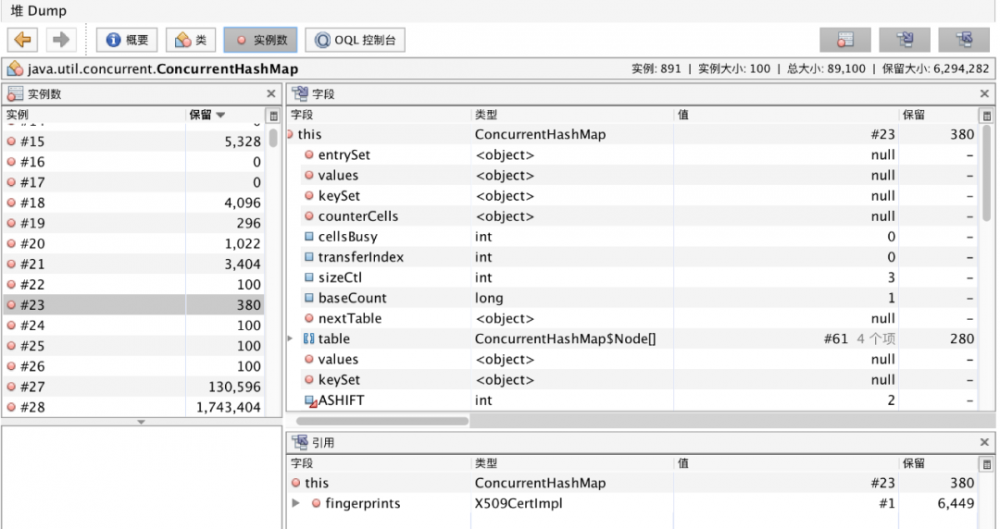
当然,mat 也是非常好用的工具,它能帮我们快速的定位到内存泄露的地方,便于我们排查。展示如下:
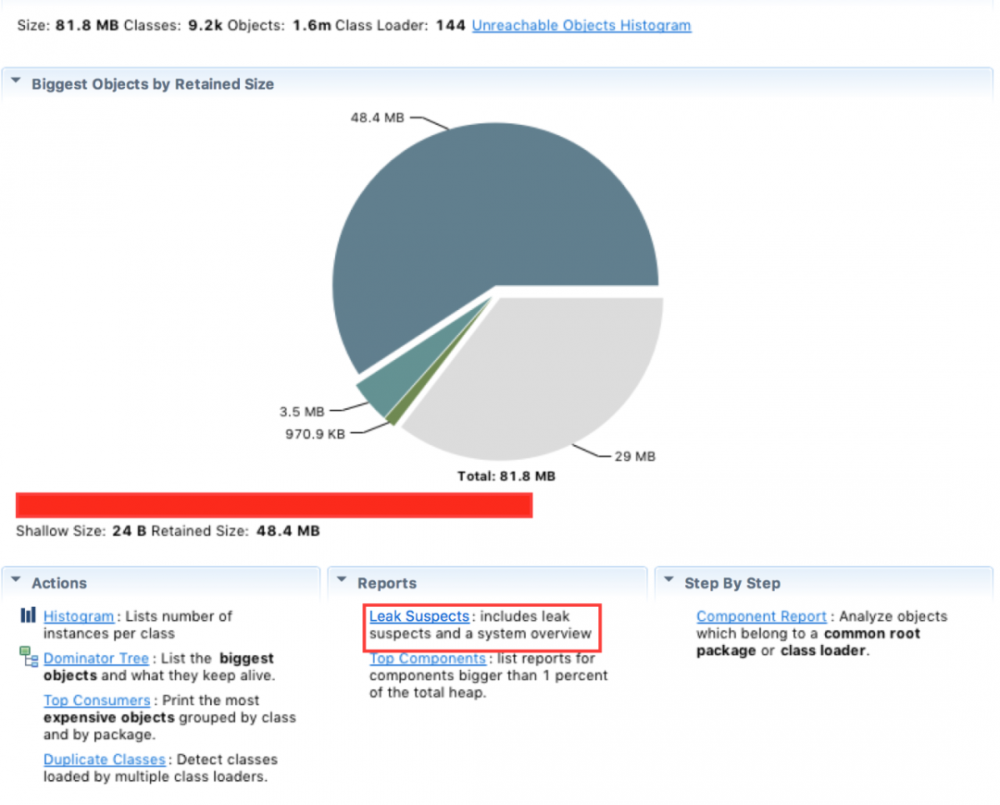
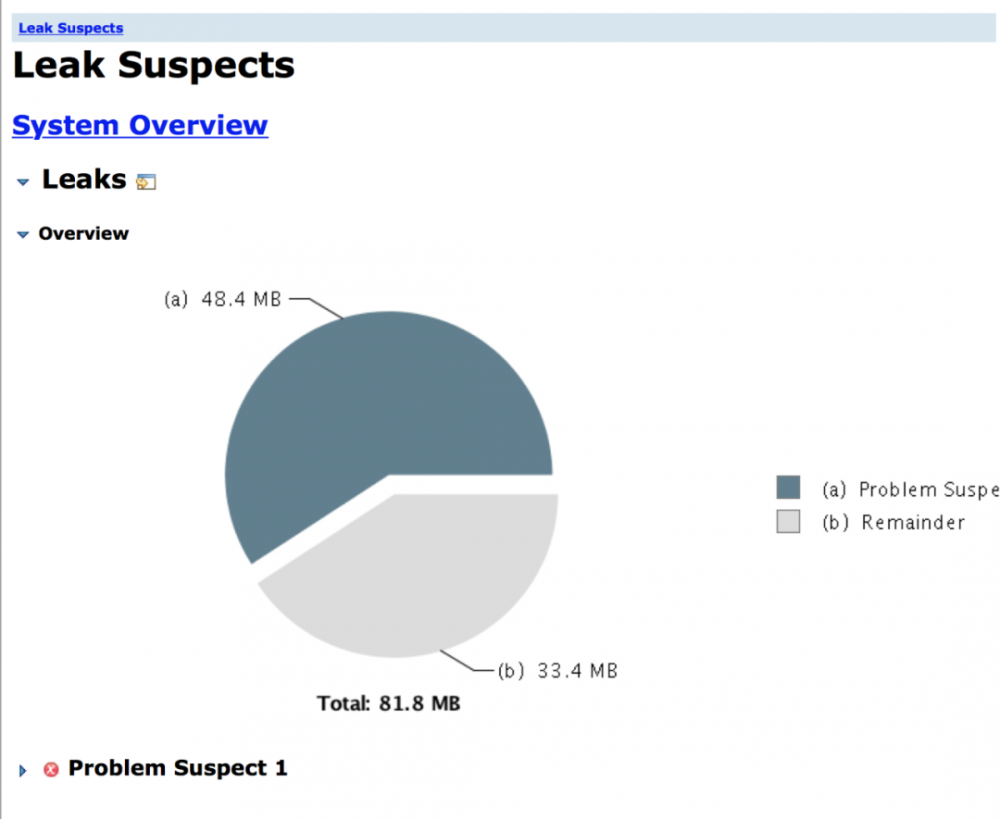
场景再现
经过分析,最后我们定位到是使用 httpasyncclient 产生的内存泄露问题。
httpasyncclient 是 Apache 提供的一个 HTTP 的工具包,主要提供了 reactor 的 io 非阻塞模型,实现了异步发送 http 请求的功能。
下面通过一个 Demo,来简单讲下具体内存泄露的原因。
httpasyncclient 使用介绍:
1.maven 依赖
<dependency>
<groupId>org.apache.httpcomponents</groupId>
<artifactId>httpasyncclient</artifactId>
<version>4.1.3</version>
</dependency>
2.HttpAsyncClient 客户端
public class HttpAsyncClient {
private CloseableHttpAsyncClient httpclient;
public HttpAsyncClient() {
httpclient = HttpAsyncClients.createDefault();
httpclient.start();
}
public void execute(HttpUriRequest request, FutureCallback<HttpResponse> callback){
httpclient.execute(request, callback);
}
public void close() throws IOException {
httpclient.close();
}
}
主要逻辑:
Demo 的主要逻辑是这样的,首先创建一个缓存列表,用来保存需要发送的请求数据。
然后,通过循环的方式从缓存列表中取出需要发送的请求,将其交由 httpasyncclient 客户端进行发送。
具体代码如下:
public class ReplayApplication {
public static void main(String[] args) throws InterruptedException {
//创建有内存泄露的回放客户端
ReplayWithProblem replay1 = new ReplayWithProblem();
//加载一万条请求数据放入缓存
List<HttpUriRequest> cache1 = replay1.loadMockRequest(10000);
//开始循环回放
replay1.start(cache1);
}
}
回放客户端实现(内存泄露):
这里以回放百度为例,创建10000条mock数据放入缓存列表。回放时,以 while 循环每100ms 发送一个请求出去。具体代码如下:
public class ReplayWithProblem {
public List<HttpUriRequest> loadMockRequest(int n){
List<HttpUriRequest> cache = new ArrayList<HttpUriRequest>(n);
for (int i = 0; i < n; i++) {
HttpGet request = new HttpGet("http://www.baidu.com?a="+i);
cache.add(request);
}
return cache;
}
public void start(List<HttpUriRequest> cache) throws InterruptedException {
HttpAsyncClient httpClient = new HttpAsyncClient();
int i = 0;
while (true){
final HttpUriRequest request = cache.get(i%cache.size());
httpClient.execute(request, new FutureCallback<HttpResponse>() {
public void completed(final HttpResponse response) {
System.out.println(request.getRequestLine() + "->" + response.getStatusLine());
}
public void failed(final Exception ex) {
System.out.println(request.getRequestLine() + "->" + ex);
}
public void cancelled() {
System.out.println(request.getRequestLine() + " cancelled");
}
});
i++;
Thread.sleep(100);
}
}
}
内存分析:
启动 ReplayApplication 应用(IDEA 中安装 VisualVM Launcher后,可以直接启动visualvm),通过 visualVM 进行观察。
1.启动情况:
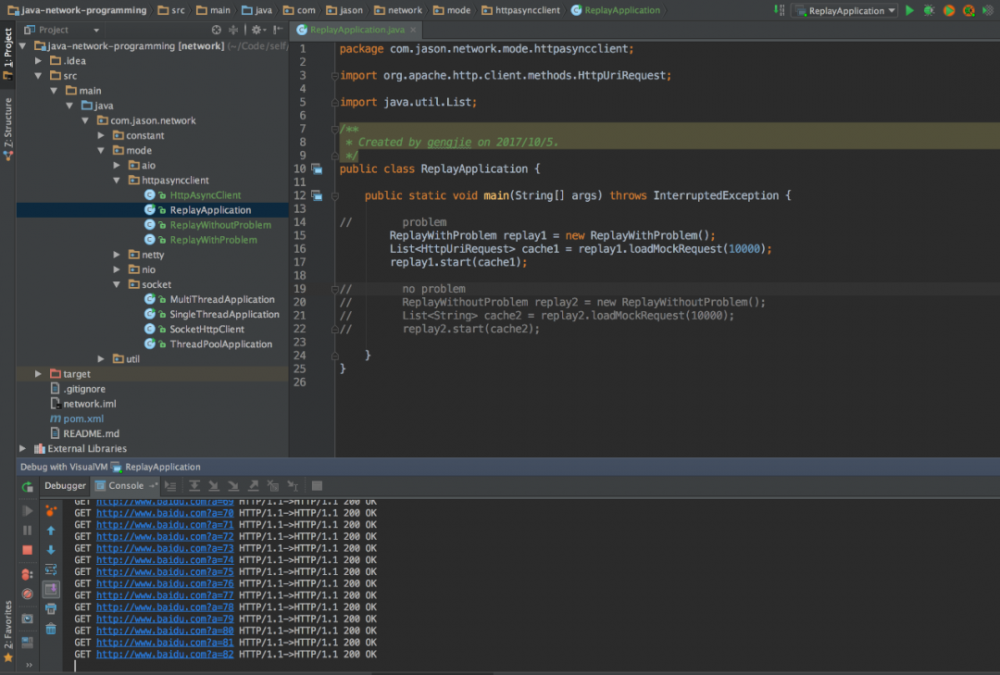
2.visualVM 中前后3分钟的内存对象占比情况:
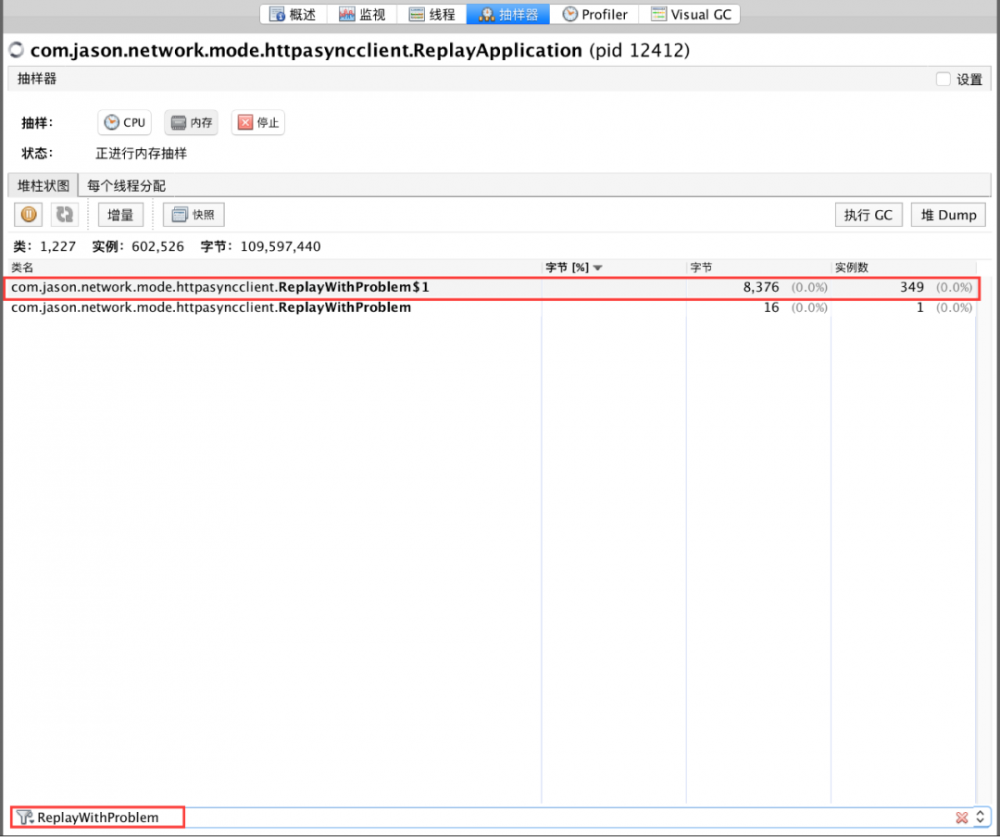
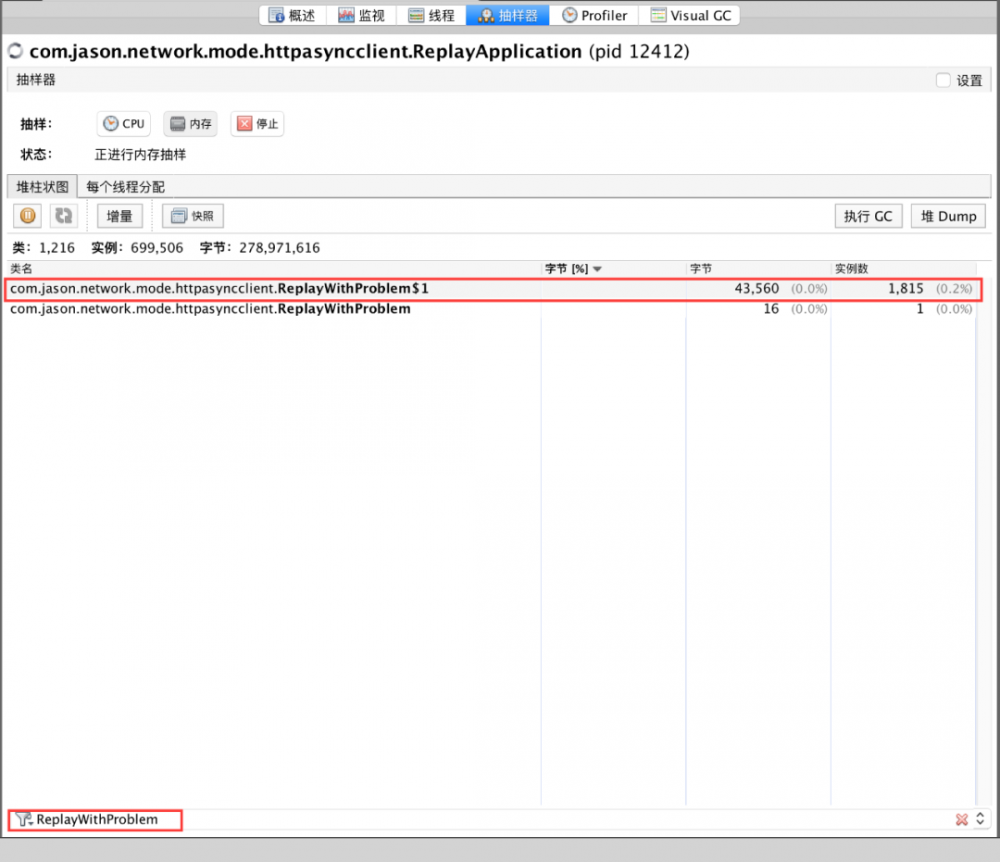
说明:$0代表的是对象本身,$1代表的是该对象中的第一个内部类。所以ReplayWithProblem$1: 代表的是ReplayWithProblem类中FutureCallback的回调类。
从中,我们可以发现 FutureCallback 类会被不断的创建。因为每次异步发送 http 请求,都是通过创建一个回调类来接收结果,逻辑上看上去也正常。不急,我们接着往下看。
3.visualVM 中前后3分钟的GC情况:
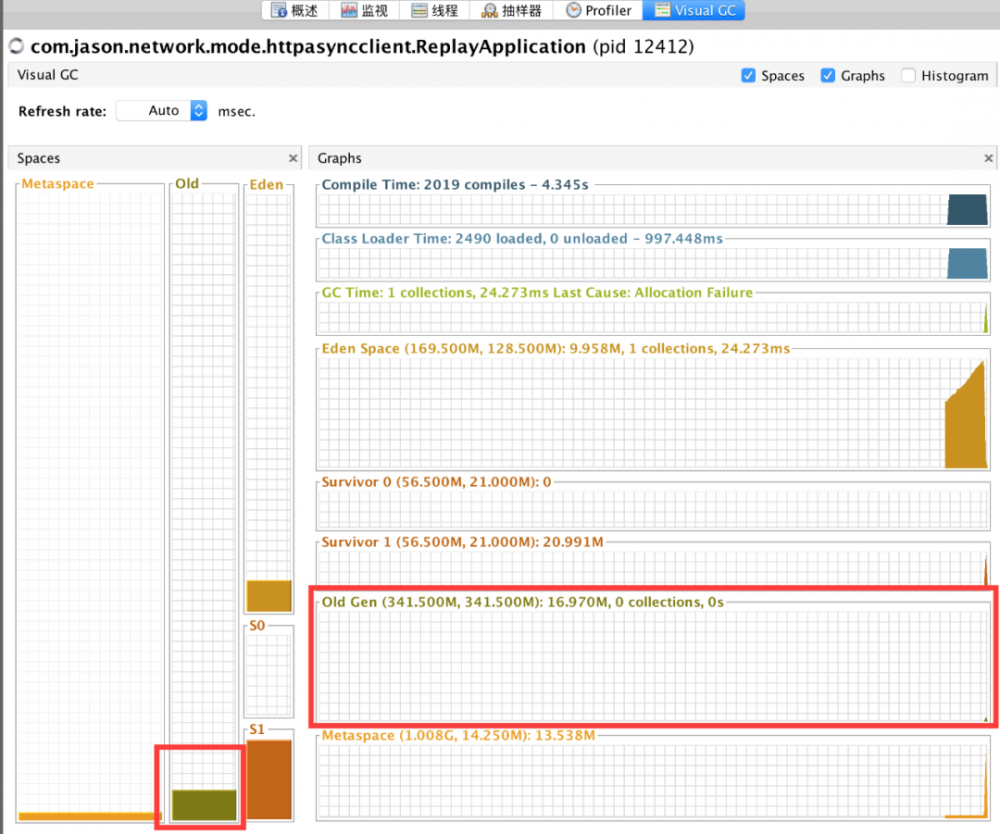
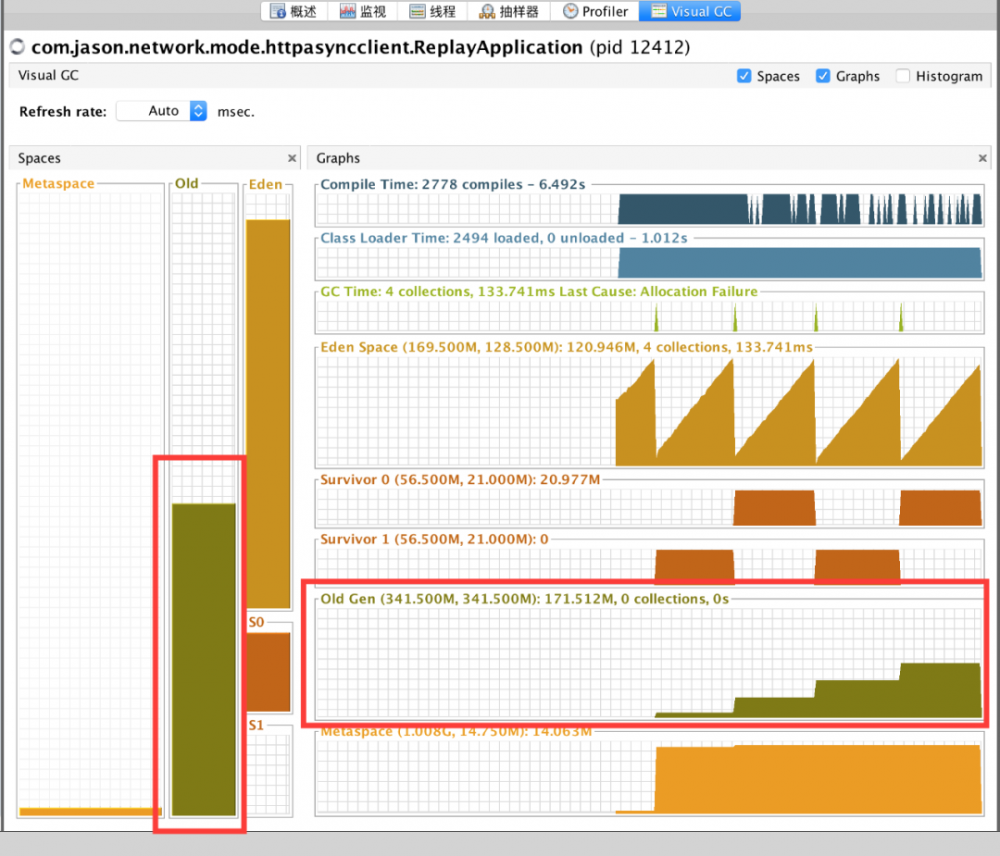
从图中看出,内存的 old 在不断的增长,这就不对了。内存中维持的应该只有缓存列表的http请求体,现在在不断的增长,就有说明了不断的有对象进入old区,结合上面内存对象的情况,说明了 FutureCallback 对象没有被及时的回收。
可是该回调匿名类在 http 回调结束后,引用关系就没了,在下一次 GC 理应被回收才对。我们通过对 httpasyncclient 发送请求的源码进行跟踪了一下后发现,其内部实现是将回调类塞入到了http的请求类中,而请求类是放在在缓存队列中,所以导致回调类的引用关系没有解除,大量的回调类晋升到了old区,最终导致 Full GC 产生。
核心代码分析:

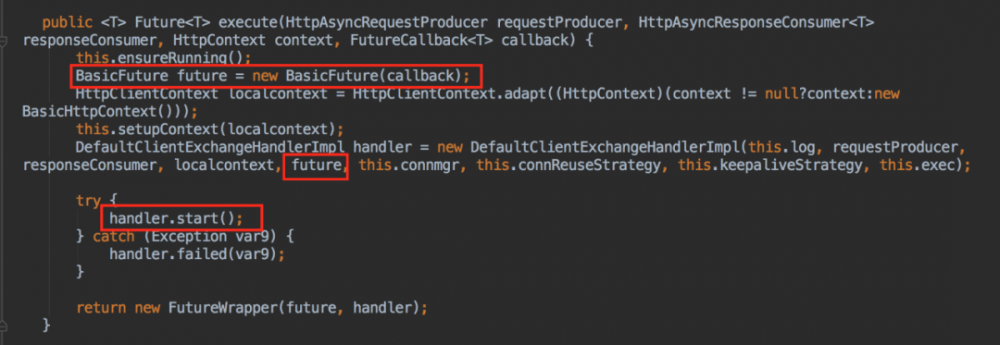

代码优化
找到问题的原因,我们现在来优化代码,验证我们的结论。因为List<HttpUriRequest> cache1中会保存回调对象,所以我们不能缓存请求类,只能缓存基本数据,在使用时进行动态的生成,来保证回调对象的及时回收。
代码如下:
public class ReplayApplication {
public static void main(String[] args) throws InterruptedException {
ReplayWithoutProblem replay2 = new ReplayWithoutProblem();
List<String> cache2 = replay2.loadMockRequest(10000);
replay2.start(cache2);
}
}
public class ReplayWithoutProblem {
public List<String> loadMockRequest(int n){
List<String> cache = new ArrayList<String>(n);
for (int i = 0; i < n; i++) {
cache.add("http://www.baidu.com?a="+i);
}
return cache;
}
public void start(List<String> cache) throws InterruptedException {
HttpAsyncClient httpClient = new HttpAsyncClient();
int i = 0;
while (true){
String url = cache.get(i%cache.size());
final HttpGet request = new HttpGet(url);
httpClient.execute(request, new FutureCallback<HttpResponse>() {
public void completed(final HttpResponse response) {
System.out.println(request.getRequestLine() + "->" + response.getStatusLine());
}
public void failed(final Exception ex) {
System.out.println(request.getRequestLine() + "->" + ex);
}
public void cancelled() {
System.out.println(request.getRequestLine() + " cancelled");
}
});
i++;
Thread.sleep(100);
}
}
}
结果验证
1.启动情况:
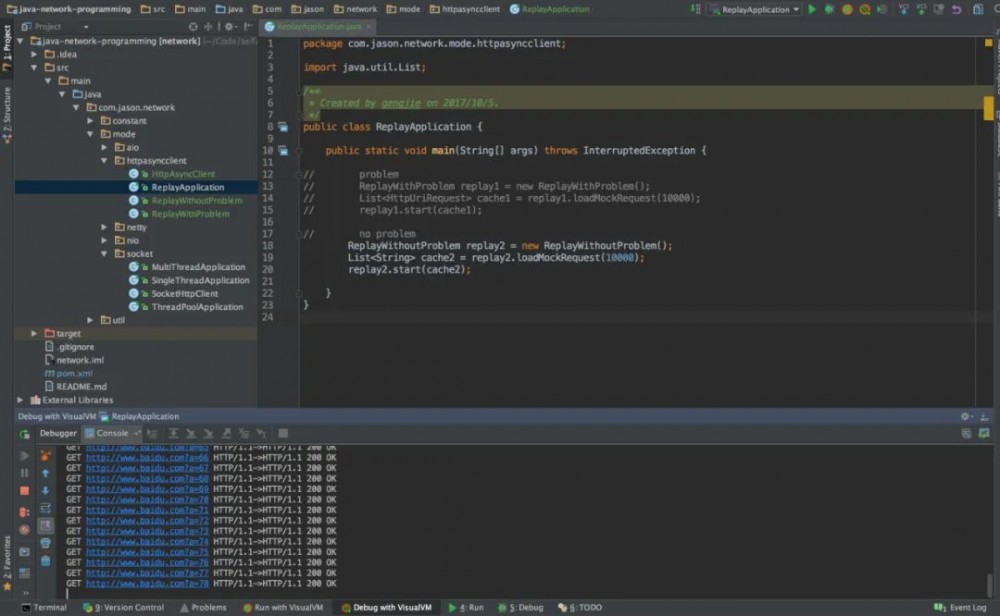
2.visualVM 中前后3分钟的内存对象占比情况:
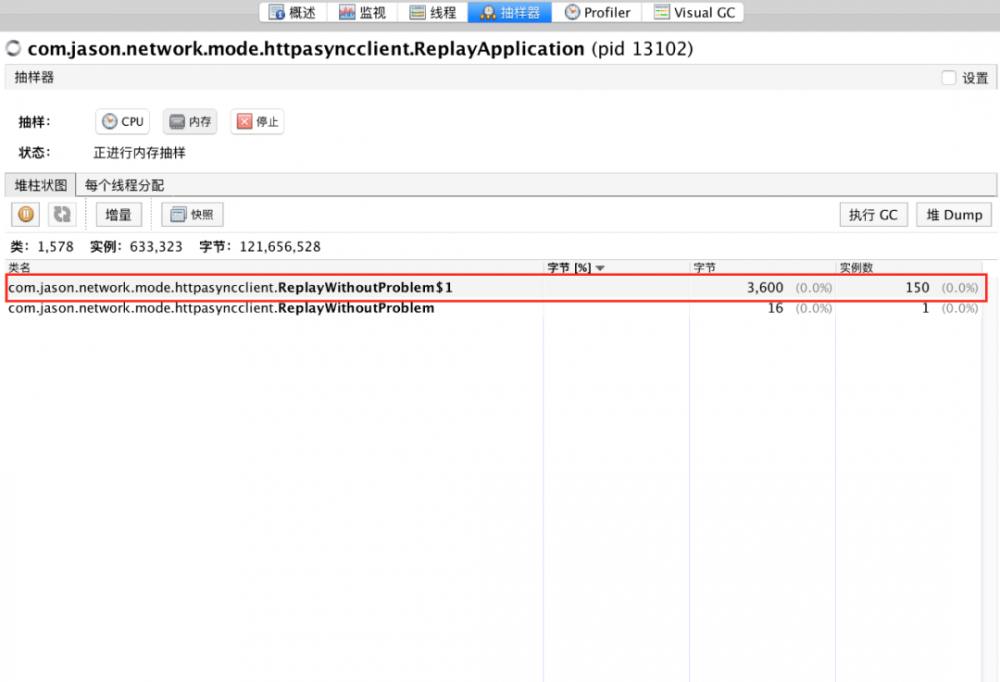
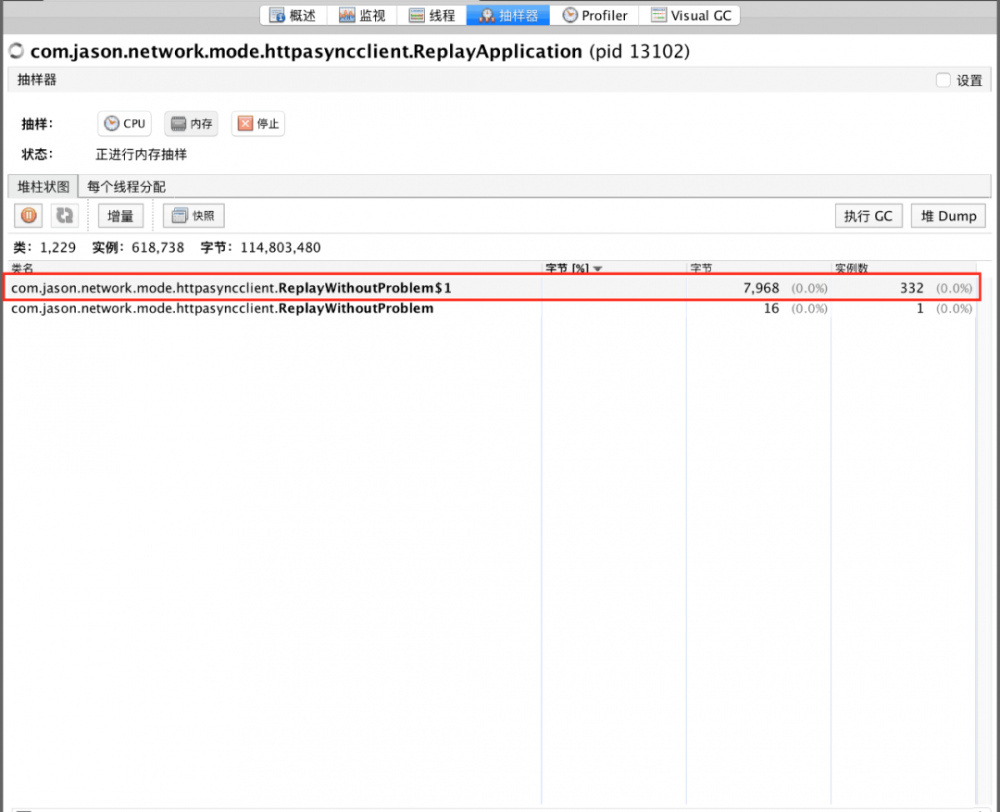
3.visualVM 中前后3分钟的GC情况:
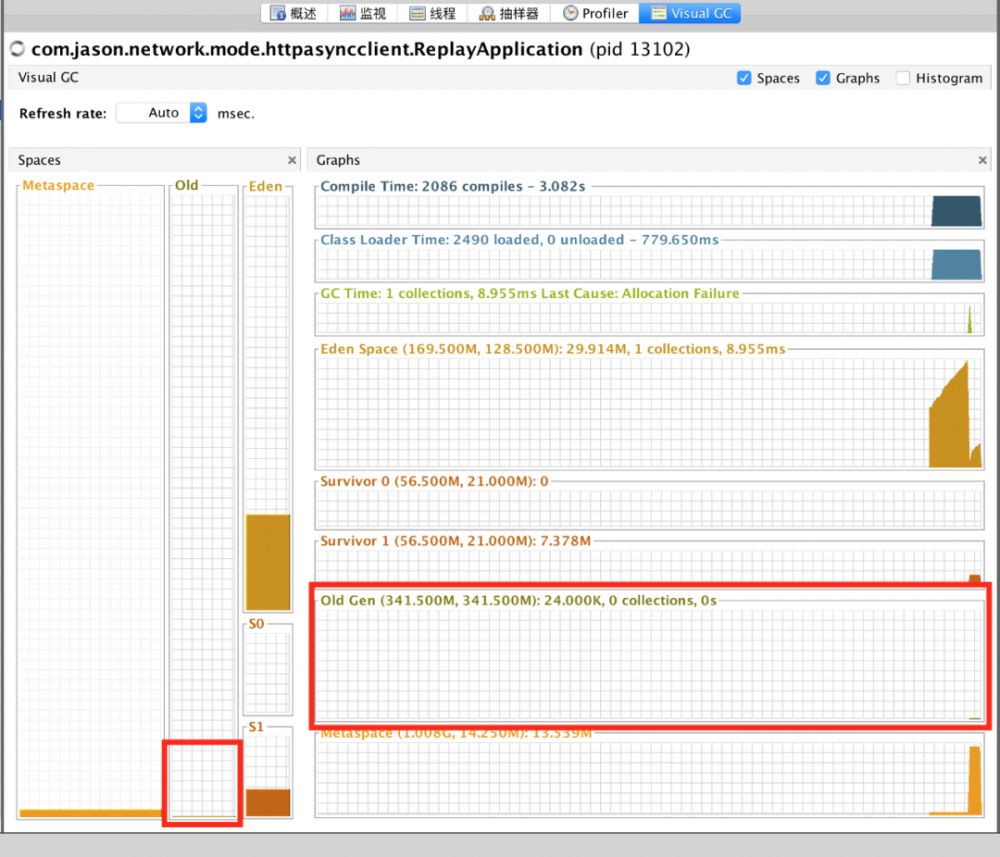
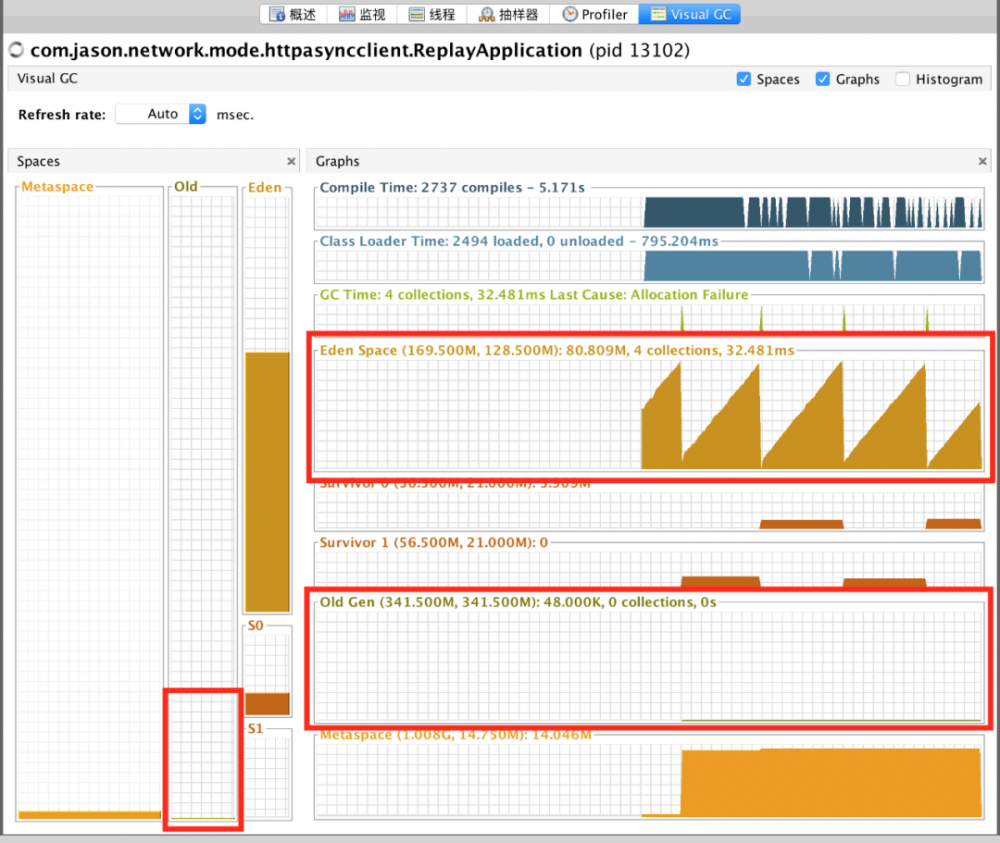
从图中,可以证明我们得出的结论是正确的。回调类在 Eden 区就会被及时的回收掉。old 区也没有持续的增长情况了。这一次的内存泄露问题算是解决了。
总结
关于内存泄露问题在第一次排查时,往往是有点不知所措的。我们需要有正确的方法和手段,配上好用的工具,这样在解决问题时,才能游刃有余。当然对JAVA内存的基础知识也是必不可少的,这时你定位问题的关键,不然就算工具告诉你这块有错,你也不能定位原因。
最后,关于 httpasyncclient 的使用,工具本身是没有问题的。只是我们得了解它的使用场景,往往产生问题多的,都是使用的不当造成的。所以,在使用工具时,对于它的了解程度,往往决定了出现 bug 的机率。












![[HBLOG]公众号](https://www.liuhaihua.cn/img/qrcode_gzh.jpg)

